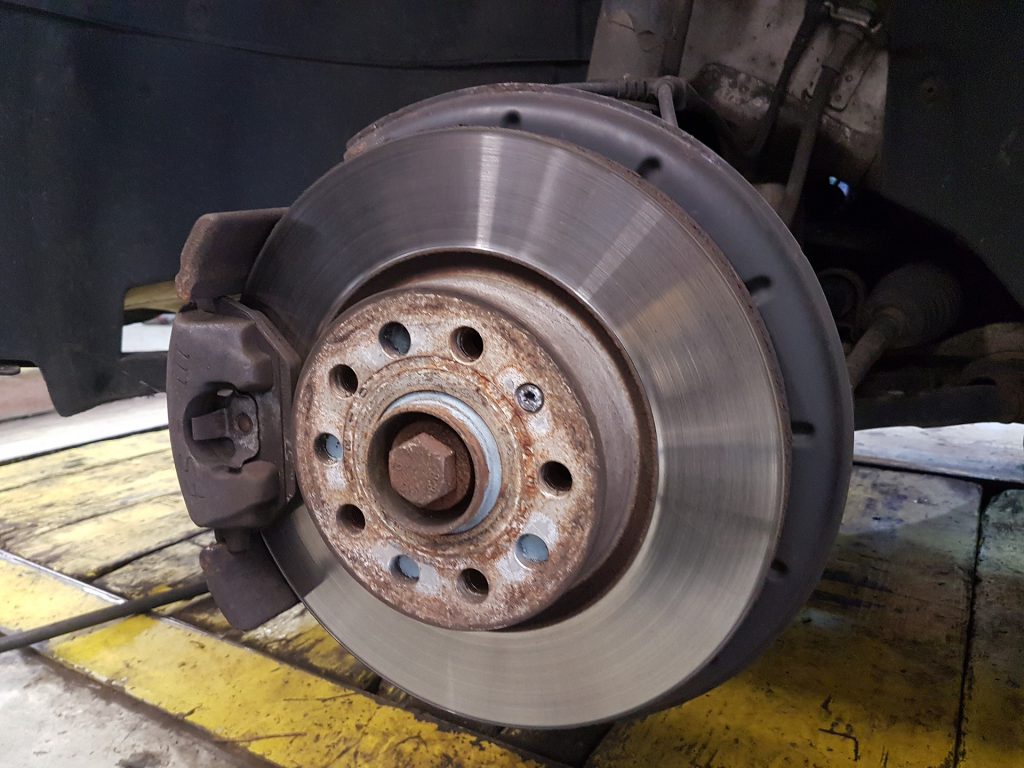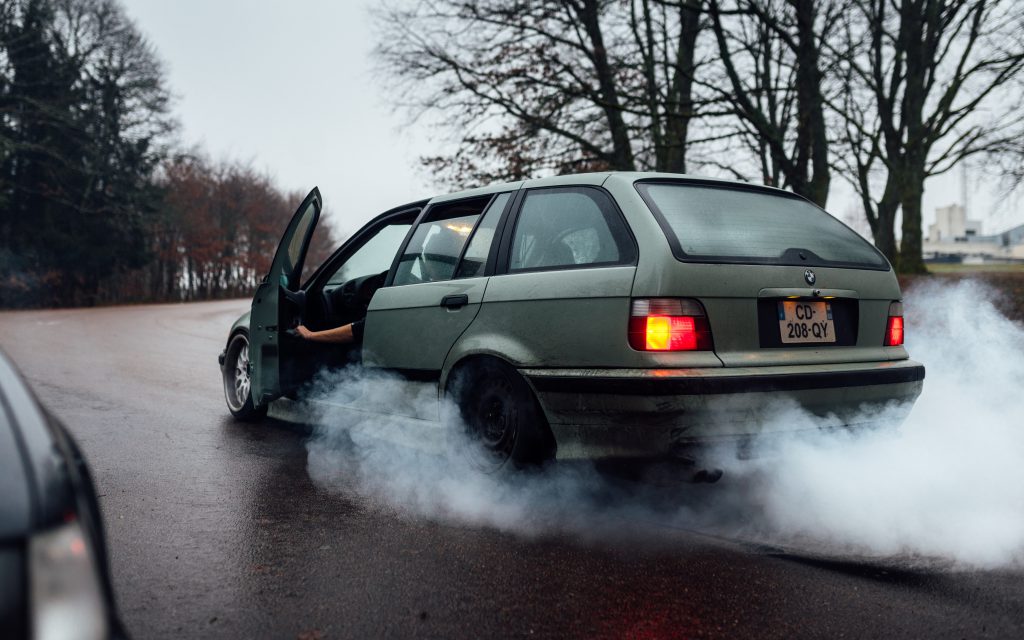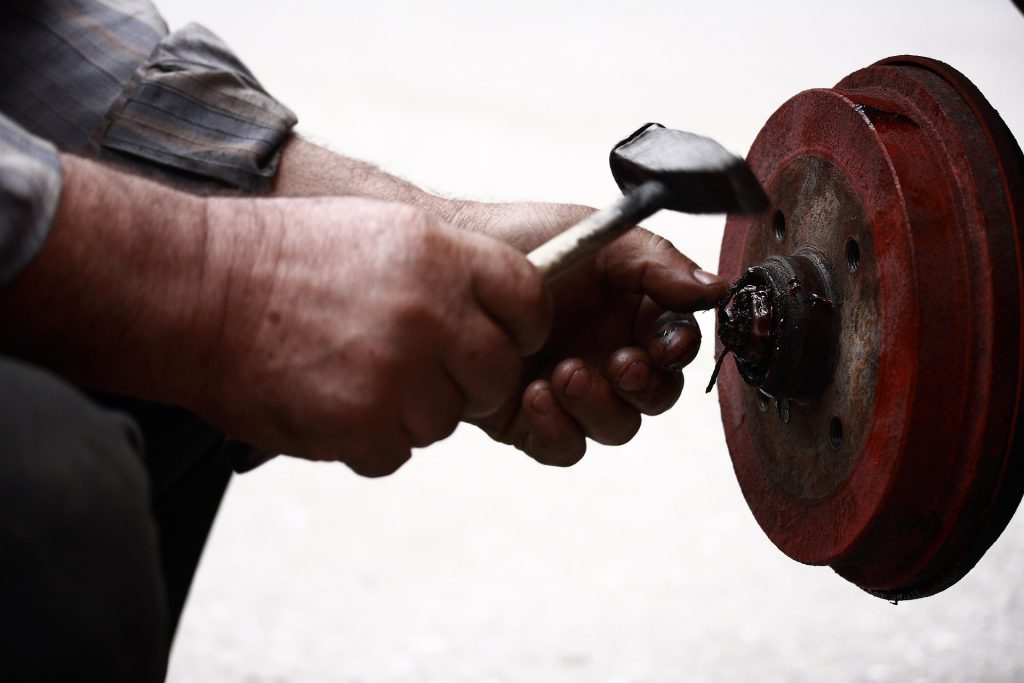Does Your Car Need New Brakes?
A Guide to How Brakes Work
We all have experienced the dread of our car shaking when we come to a stop. It is also common to hear weird noises when we brake, resembling nails on a chalkboard. The moment issues like this start happening we automatically begin feeling pain for our bank account. Luckily the cost doesn’t have to leave you broke.

First, let’s go over the different parts of your brake system. Some people believe the brakes are just pads and rotors; in reality your brake system is much more complex than that. One part of the system is the master cylinder, which is under the hood and works with the brake pedal itself. There are also wheel cylinders, located at each wheel, that work off the master cylinders command. When you press the pedal to brake, the master cylinder forces fluid to the wheel cylinders. The fluid is brake fluid, it is exchanged through the brake lines and hoses, which are what connects these cylinders together. Brake fluid not only runs through these lines but it is also stored in a reservoir used by the master cylinder.
Power brake boosters also come in cars now; they add pressure to the master cylinder with the help of the engine. If your engine starts to fail, it could be a reason multiple auto parts in your car start to act funny, including these two parts in the brake system. Replacing an engine assembly is costly, if you feel that this is the reason your car is performing poorly check out My Auto Store. They sell used engines and transmissions online and they have used engines for sale for your exact make and model.
The next brake system part we are going to cover is the anti-lock or ABS System; it limits the pressure sent to the wheel cylinders. This auto part allows you to press the brake as much as you need without locking up the wheels. This way you can steer while braking suddenly; it prevents skidding as well.
There are different types of brakes, disc brakes are designed with the brake pads hugging the rotors; the brake pads are enclosed in the caliper. The caliper has pistons in it that press against the pads causing them to press against the rotors causing deceleration. The rotors spin with the wheel and this is why the whole wheel stops when you press the brakes. The master cylinder sending brake fluid to the wheel cylinders applies pressure that makes these actions take place. Disc brakes are often found in the front wheels of a vehicle. Their counterparts, drum brakes, are being used less as time goes on. Although we still see them in many modern cars, they definitely are more common in older vehicles.
Drum brakes are hollow and turn with the wheel; each wheel has two shoes that curve to its shape. When the pistons receive pressure they press into the shoes, which expand outwards meeting the drum, slowing the vehicle. Rear drum brakes are being replaced with disc brakes more often. Believe it or not, drum brakes were on all four wheels until the 1970’s. Calipers can be found in both disc and drum brakes. On drum brakes it is usually called a floating caliper because it moves from side to side a bit when you brake. Although there are dual cylinder calipers, with two/four pistons, that stay still.
Lastly, the parking brake or handbrake is usually connected to the rear brakes by cables. Many people use this in manual cars when parking, even automatic car users will use it while parking for a security measure. This brake could also help if the brake system fails completely.
How Do I Know My Brakes Are Failing?

After explaining how these parts work, you are probably wondering what signs are associated with your brake system needing certain parts replaced. The most common replacements are the brake pads or shoes. These are constantly being rubbed against the rotors, meaning they will most likely be the first to go. If you hear sounds like squealing or grinding, your pads could be worn down too much. This, in return, begins to warp the rotors.
When your rotors are warped you may experience wobbling, pulsation, or scraping. This is because the surface of them is uneven or they have grooves, for smooth stopping it is important that the surface of the rotor is smooth. Do not let these get too bad, the worn metal pads on metal rotors can begin to damage other expensive and crucial parts of your brake system. Worst case, your brakes could fail altogether, this is an extremely dangerous outcome. Usually, when you replace the rotors, you just get new pads/shoes along with them.
The caliper could also cause rough braking because it is not releasing properly. If the piston gets sticky from heat, it may not completely release the brake pad. The outcome of this could be your car pulling to one side while braking. One caliper could be applying more pressure than the other, causing the car to go off balance. If it is pulling and the calipers are fine, check the hoses, there could be an issue with the fluid being sent to your wheel cylinders. If you smell something burning pull over immediately, if smoke is coming from your wheels, then the caliper may be stuck. If it is not the caliper, allow the brakes to cool because you may have just overheated your brakes, calipers can cost a pretty penny to replace.
If you notice soft braking, you may want to check your brake fluid. The master cylinder holds this fluid and it could have a leak somewhere if it is not braking as powerfully as it used to. If it is not in the master cylinder you should check the hoses leading to the wheel cylinders. Thankfully, if you need a replacement master cylinder for cheap, you can call My Auto Store.
If your ABS System fails your brake pedal could become unresponsive or may not work well, meaning you have to press down harder to brake. They could also begin locking up or the ABS light could come on. If your brake warning light comes on, which is a separate light from the ABS light; this could point to many different issues. The parking brake could be in use still, your brake fluid could be low, your brake lights could need to be replaced, it is also another indication the anti-lock brake system could be failing. Either way you want to check the reasons behind these lights right away to avoid any other issues arising.
Finally let’s talk about what problems are connected with your power brake booster. The pedal could be difficult to push down and may not fully return to its starting position. It could take you longer than usual to actually come to a complete stop. The engine could stall as well; we noted earlier that the engine could be running poorly and cause the booster to act funny. On the flip side, this part itself failing can mess up your engine too. You can find a guide to see if it is faulty at axleaddict.com.
Fun fact! If you do not apply your lug nuts in a specific star pattern they may be causing your rotors to become worn quicker than usual. It is important you put them back on in a star pattern with the right amount of pressure to avoid this, check out the pattern at yourdreamgarage.com!
How Much Money Is This Going To Cost Me?
Sadly, none of these repairs are going to be cheap at a repair shop. Below is a chart showing the roundabout prices in repair shops for each of the repairs of the brake system we went over. They vary from vehicle to vehicle so do not let the price ranges scare you too much; we just want to take all vehicles into consideration.
| Part | Repair Shop Replacement Cost (Estimated) |
| Brake Pads/Shoes (by themselves) | $150-$300 per axle/wheel |
| Brake Pads/Shoes & Rotors | $250-$500 per axle/wheel |
| Calipers | $200-$1,000 per axle/wheel |
| Brake Master Cylinder | $250-$700 |
| ABS System | Up to $1000 |
| Power Brake Booster | $250-$750 |
Is Cheap Brake Replacement Possible?

Now, you may be thinking “oh man, this is going to cost a fortune.” If you take it to a repair shop, it will be expensive. Don’t worry, you don’t have to burn through your cash, you can fix it yourself! There are multiple YouTube videos and websites to look at when replacing parts of your vehicle. If you need some help with how to replace a caliper check out how to install brake calipers to start. You may have to invest in some tools but this can be a long term investment, you can reuse them in future repairs you may need to make. Plus, buying tools yourself will most likely still be cheaper than going to a shop.
You can follow directions on how to fix things but where do you get them? Items like brake pads, shoes, and rotors should be bought new because of their quick and repetitive wear and tear. When it comes to items that usually last the entirety of the vehicle’s life, buying used auto parts is the best bet. Unfortunately, when auto parts that usually last the life of your vehicle start to fail, you were dealt a rough hand. Instead of buying a brand new part for your higher mileage vehicle, make your purchase at an auto parts store.
The best auto part store around is My Auto Store! They sell used transmissions and engines online and they sell many other car parts over the phone. Whether you need ABS parts or a used power brake booster, calling My Auto Store is the best choice. They have calipers for $70 or less, master cylinders for $60 or less, ABS Parts starting at $35 and brake booster prices averaging around $50. You can save hundreds and maybe even thousands taking repairs into your own hands. Don’t wait on these repairs because you don’t have the money, step out of your comfort zone and start saving money by fixing your own car!